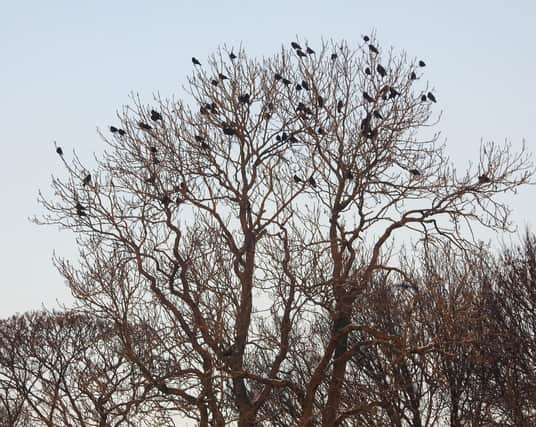Wildlife: Winter crows gather in their darkly brooding flocks


Moreover, these are long lived, highly intelligent birds and know their territory particularly well. However, in winter the crows become more gregarious and flock up in huge cold weather roosts at favoured locations. Owler Bar in the eastern Peak District used to be one favoured site until the farming there changed, and Ecclesall Woods in Sheffield has sometimes had up to twelve thousand birds at a time. The crows gather in pre-roost sites in early afternoon and then gradually head off, ‘as the crow flies’, to the main roost. The behaviour seems to be triggered by long, cold periods of weather and when milder, I suspect the birds stick to smaller, more local roost sites. The flocks are mixed with carrion crows, and jackdaws in abundance, but with a few rooks as well, and these days, even a few ravens. Magpies, as far as I can tell, keep largely to their own separate gatherings.
Certainly, in Graves Park, close to where I live, the carrion crows and jackdaws gather in numbers of maybe fifty to a hundred or more birds, in the open areas of park grassland. They particularly favour the open grassland and the fields by the animal enclosures by the main hall. With hay and other foodstuff for the cows and sheep, there are easy pickings to be had, and the jackdaws particularly, tend to associate with the livestock. It is likely that they also pick of insects and other pests from the animal’s fur, and so their presence is at least tolerated. As afternoon progresses, the birds aggregate on the grassland but generally they are spaced out away from each other. Individuals associating more intimately are generally ones which are already paired up. Both crows and jackdaws will fly up as a pair and, calling loudly, perform aerial acrobatics together. Gradually the birds prepare to move off to a nearby sheltered copse of trees where they will spend the night, warm and secure.
Advertisement
Hide AdAdvertisement
Hide AdProfessor Ian D. Rotherham, researcher, writer & broadcaster on wildlife & environmental issues, is contactable on [email protected] ; follow Ian’s blog (https://ianswalkonthewildside.wordpress.com/ ) and Twitter @IanThewildside